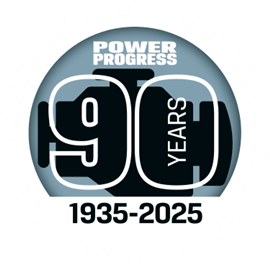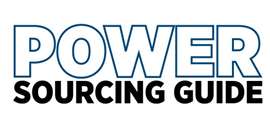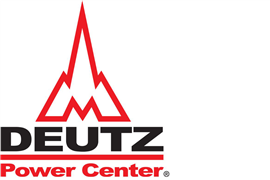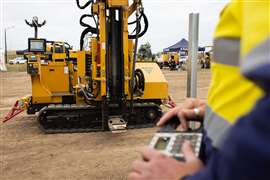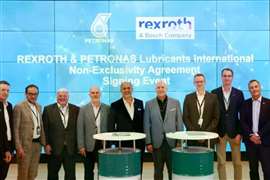Read this article in French German Italian Portuguese Spanish
Turntide Technologies: Hybrids get a fresh look
20 August 2025
Turntide CEO Steve Hornyak discusses the potential for hybrids and how axial flux motors can help.
In the rush to electrify, it seemed like hybridization was often bypassed as a step in the decarbonization process.
“In an evolutionary world, you would go ICE (internal combustion engine), hybrid then over to full EV (electric vehicle). That’s kind of a normal evolutionary process,” noted Steve Hornyak, president and CEO, Turntide Technologies. This has not proven the case for many OEMs and their suppliers.
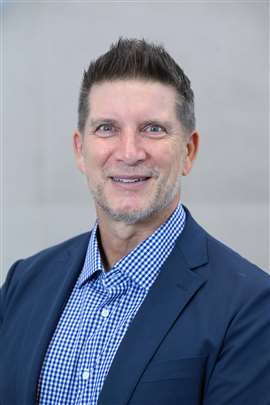 Steve Hornyak, president and CEO, Turntide Technologies.
Steve Hornyak, president and CEO, Turntide Technologies.
“There was a big jump because there were significant social and economic pressures to move directly over to EVs [due to] the decarbonization effort that was going across the globe,” said Hornyak. Governments helped fund the move with incentives and, in some cases, mandated it, forcing industry to go down that path.
Now, it’s becoming increasingly clear that decarbonization does not have to be an all or nothing situation. “There are going to be matches where the best thing for [a machine] is going to be a pure ICE diesel- or gas-based model. There might be others where a pure EV is a fundamentally better application and purpose for it,” Hornyak stated. “And then you have the ones in the middle where hybrid is a great fit.”
More range, less cost
With a hybrid, you’re able to reduce the size of the ICE and complement it by installing an inline electric motor, Hornyak pointed out.
“Typically, inline is the best way to do that and then you get this massively high-performing ‘beast’ in a smaller, compact manner that burns less fuel, goes further on a tank of gas or diesel, and is better for the environment than a larger engine – but not as good as pure EV,” he said.
He went on to state that a hybrid can be the best choice for a lot of applications today, particularly where range anxiety is a concern and full battery electric isn’t practical, such as certain types of commercial vehicles.
 Marine-based applications offer a promising market for hybridization. Shown is the FollaPower 50EL hybrid workboat. (Photo: Damen Shipyards Group)
Marine-based applications offer a promising market for hybridization. Shown is the FollaPower 50EL hybrid workboat. (Photo: Damen Shipyards Group)
Marine-based applications are also a promising market. “We’re seeing a lot of pull in the marine industry [to provide] the ability for boats, whether they’re commercial or otherwise, to be able to go longer distances, have more power with a smaller form factor, without the need for giant battery packs.”
At the system level, hybridization can prove a practical solution for hydraulics. The addition of one or more electric motors to power the system can allow for a smaller diesel engine, which Hornyak said reduces initial costs and is more cost-efficient overall in the long term.
“Now you’re getting into the mode with hybridization where the emphasis is not necessarily on saving the planet. It is green... but it is green relative to money savings,” said Hornyak. “It operates more efficiently and more effectively, burns less fuel, has lower operating costs and gets you higher performance. So, it does all of that and, oh, by the way, it’s great for the environment.”
Hybridization, like ICE, is likely to be around for a long time, he continued. “Now, do I think over time ICE becomes more of a niche application and hybrid and EVs split the difference? Yeah, I think that over time. But that’s going to be 10-plus years in the future. Until then, you’re going to have a healthy mix of all three in all different types of applications.”
Optimal choice for hybrids
Pairing the right engine and motor is crucial for hybrids. While radial flux motors tend to be more common in many scenarios, axial flux motors can offer distinct advantages when it comes to hybridization, said Hornyak, such as a smaller profile, lighter weight and higher power density.
“You’re getting higher torque, more power, lower fossil fuel consumption in a more space-efficient package than you would with any other technology out there today,” he asserted.
“If you have the size and space to put [in a radial motor], and you’re okay with getting something bigger to produce the same power, that’s okay. But most of the time, in hybrids, you’re space constrained because you have an engine and a motor and you’re trying to put them in the same space that you had the engine before, and you don’t want to reengineer the entire vehicle.”
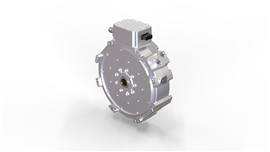 Axial flux motors, like Turntide’s AF430S, offer advantages such as a smaller profile, lighter weight and higher power density. (Photo: Turntide Technologies)
Axial flux motors, like Turntide’s AF430S, offer advantages such as a smaller profile, lighter weight and higher power density. (Photo: Turntide Technologies)
An axial flux, or “pancake,” motor can typically enable both the engine and motor to fit within the original footprint, Hornyak said.
For example, Turntide is currently working with a large global company out of India testing its axial flux motor in light commercial vehicles. “They literally said, ‘Steve, we can’t change the design or architecture or frame of this vehicle, but what we want to do is have a smaller diesel and then put your axial flux in line with it in the same space.’ They couldn’t use any other type of technology. It had to be axial flux.”
Axial flux motors are available in a wide range of configurations. “So, there’s a bunch of different ways that this pancake motor can be configured to meet your needs,” Hornyak said. “One of the unique things about Turntide is we have a high-volume, highly configurable system versus a take it or leave it out of box [design] or custom engine job shop. We’ve merged the best of those two worlds.”
Hand-in-hand collaboration
To help in determining the right solution, Turntide’s customer success and application engineering group works closely with an OEM’s internal teams or with system integrators to ensure the customer ends up with the optimal solution.
“It is working hand in hand with them in helping understand their application and making sure we put together the right axial flux motor, the right configuration of that motor and pair it with the proper inverter,” Hornyak explained.
 Turntide works closely with customers to identify the right axial flux motor combination to meet their needs. (Photo: Becky Schultz)
Turntide works closely with customers to identify the right axial flux motor combination to meet their needs. (Photo: Becky Schultz)
Take a recent application in which an OEM in the marine sector had a project that involved a tight axial length, challenging diameter and high throughput torque requirement. This called for a torque-dense motor in a tight package to optimize the drivetrain layout. Sample design and delivery was required within five months with the whole program completed in 18 months.
The hybrid system – delivered within the tight deadline – provided significant noise reduction, which benefited the target application in pleasure craft, improved maneuvering during docking and created cost savings because the motor provided motoring and power generating.
In another example, the OEM needed to convert a rigid dump truck with a 291-tonne payload to operate with a hydrogen fuel cell system. The system would include electric motors to drive important auxiliary functions, including two hydraulic pumps.
This project involved retrofitting traditional diesel-powered components with an electric powertrain while maintaining the truck’s performance, reliability and efficiency in mining environments. The project was split into two stages. The hydraulic system, comprised of two pumps driving steering, brakes, hoist, and the brake cooling system, was the first system to be electrified.
Turntide’s team identified the right axial flux motor configuration and specifications to match the OEM’s requirements. The axial flux motors optimized thermal and power management, giving the manufacturer the ability to create an agnostic platform that supports reduced operational costs while minimizing environmental impact and is suitable for custom battery, fuel cell and hybrid technologies. The transition also enabled future electrification scalability.
“The axial flux motors,” Hornyak commented, “are just phenomenal technology for next-gen electric and hybridization.”
POWER SOURCING GUIDE
The trusted reference and buyer’s guide for 83 years
The original “desktop search engine,” guiding nearly 10,000 users in more than 90 countries it is the primary reference for specifications and details on all the components that go into engine systems.
Visit Now
STAY CONNECTED




Receive the information you need when you need it through our world-leading magazines, newsletters and daily briefings.
CONNECT WITH THE TEAM







